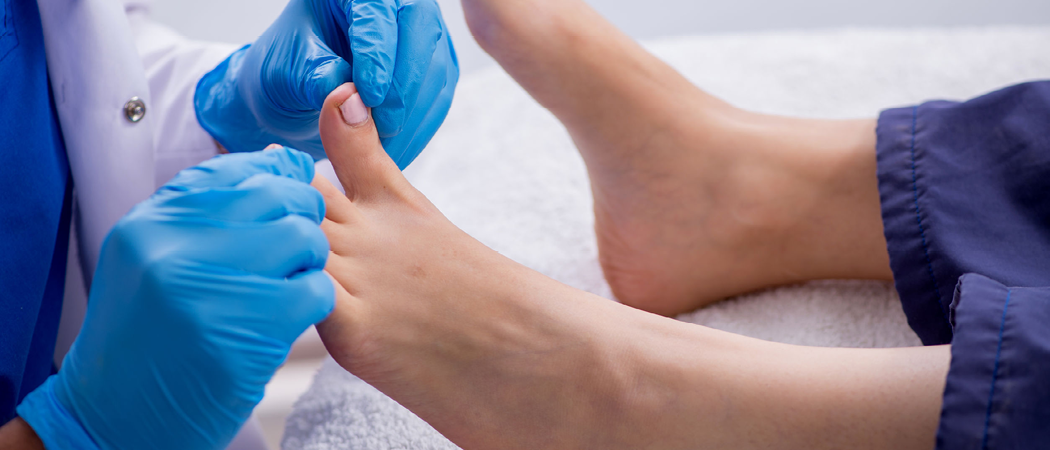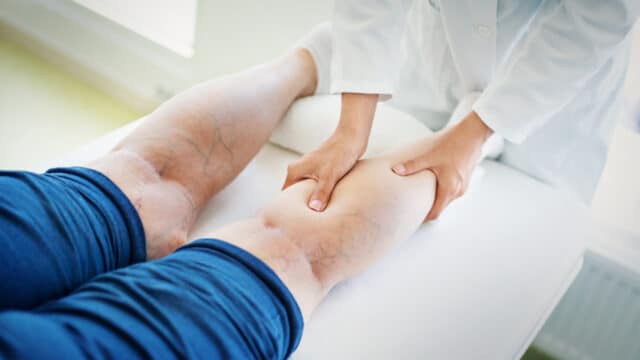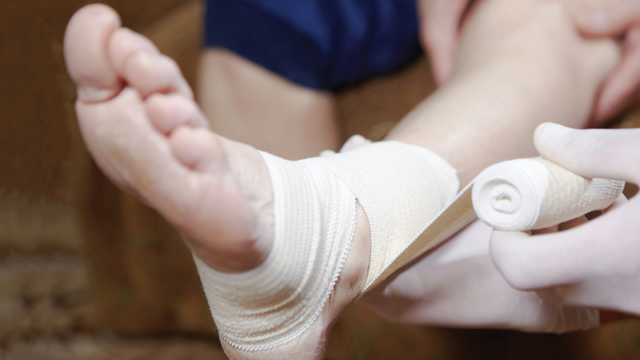Preventing Diabetic Foot Ulcers: A Comprehensive Guide

At Healogics, we understand the challenges of managing diabetes, particularly when it comes to foot health. The statistics surrounding diabetic foot ulcers are alarming. Currently, over 2 million people in the U.S. have foot ulcers, and up to 25% of all adults living with diabetes will experience a foot ulcer at some point. Non-healing diabetic foot ulcers account for 85% of diabetes-related amputations.
What is a Diabetic Foot Ulcer (DFU)?
A diabetic foot ulcer is a wound that occurs on the feet, heels or toes of people living with diabetes. People with diabetic foot ulcers often can’t feel pain in their feet due to diabetes-related nerve damage. This lack of sensation can be dangerous, as injuries may go unnoticed. However, even when there’s no pain, the foot typically still has a pulse and the skin around the wound may feel warm to the touch. Also, the skin on the legs and feet might appear dry and flaky.
If left untreated, the ulcer can grow larger and deeper due to diabetes-related blood vessel damage. When oxygen-rich blood doesn’t reach the wound because of poor circulation, healing is impaired. This can lead to infection, hospitalization, and, in severe cases, amputation. That’s why early intervention and expert care are crucial.
How to Help Prevent Diabetic Foot Ulcers:
- Inspect your feet daily, looking for ingrown, thick or odd colored toenails and toes that curl
- Use a mirror to look for any open areas in your skin and make sure to look between your toes
- Ask a family member or friend to help if you cannot thoroughly check your own feet
- Never cut corns or calluses yourself
- Never use store bought corn or callous removers, foot pads or arch supports
- Wash your feet daily, dry between your toes, and do not use powder
- If your feet become really dry, moisturize them but take care not to get the lotion between your toes
- Don’t use garters or elastics to hold up your stockings
- Don’t use panty girdles that are tight around your legs
- Always wear shoes. Do not walk barefoot indoors or outdoors
Avoid getting your feet too hot or too cold:
- Do not walk on hot sand or pavement
- Put sunscreen on your feet when in the hot sun
- Check the temperature of bath water with your hand before stepping in
- Do not use hot water bottles or heating pads to warm cold feet. Wear only loose socks at night in bed if your feet are cold
- Wear absorbent socks and change them during the day when needed
- Do not wear socks with holes in them
- Beware of car heaters on long trips
How to Care for Diabetic Foot Ulcers:
- Dress your ulcer as ordered by your doctor
- Wear shoes that protect your ulcer but do not cause rubbing or pressure
- Wear off-loading shoes, boots or casts, as directed by your doctor, to assist in healing your ulcer
- Notify your physician if the area around your ulcer becomes red or develops drainage, swelling or warmth to the area, or if you develop a fever over 101 degrees F
At Healogics, we’re committed to helping patients with diabetic foot ulcers and other chronic wounds heal faster. Our highly specialized care includes advanced therapies that foster wound closure, new tissue growth and wound tissue regeneration. These innovative treatments include total contact casting (TCC), negative pressure wound therapy and hyperbaric oxygen therapy (HBO).
Over the past twenty years, Healogics has been privileged to help heal more than four million wounds. We partner with academic and research-based scientists to consult and analyze wounds, driving innovation to provide better outcomes for our patients.
Learn more about diabetic foot ulcers and other common foot wounds at our 2021 The Year of Healing webpage or download our free patient resource, Diabetes and Wound Healing.



